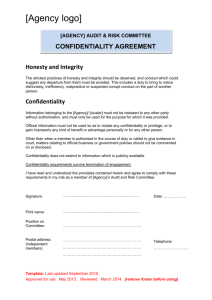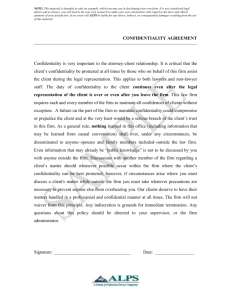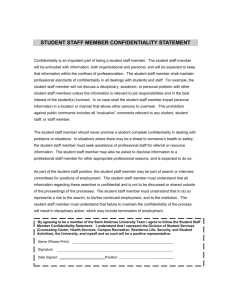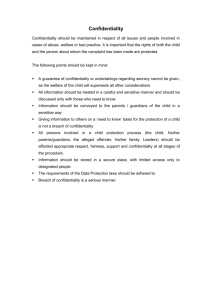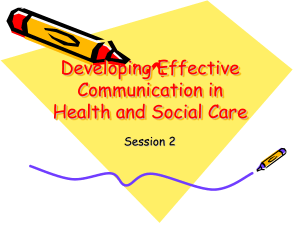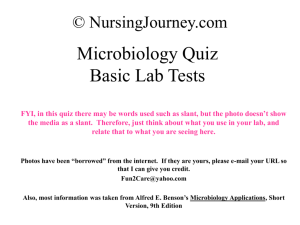Communication - Creative Support
advertisement
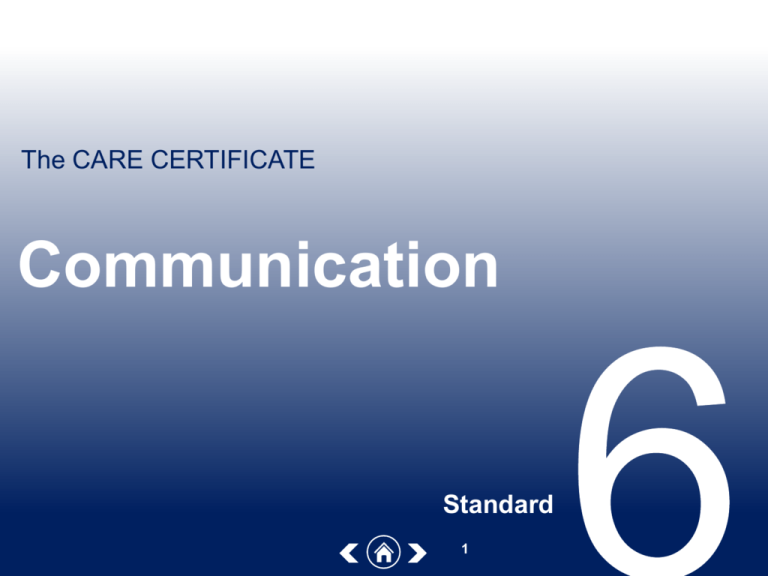
The CARE CERTIFICATE Communication Standard 1 Learning outcomes 6.1 Understand the importance of effective communication at work 6.2 Understand how to meet the communication and language needs, wishes and preferences of individuals 6.3 Understand how to promote effective communication 6.4 Understand the principles and practices relating to confidentiality 6.5 Use appropriate verbal and non-verbal communication 6.6 Support the use of appropriate communication aids/ technologies Standard 2 The importance of communication Good communication develops your knowledge and understanding about individuals and the part played by other workers. It helps to ensure that each person’s views are valued and taken into account Communication To listen carefully but also be able to speak and act in a way that the person can understand. 3 Types of communication Written communication Written communication is a method of communication that is used to send messages, keep records and provide information that is permanent Verbal communication Communication using spoken words. Tone, pitch, volume and the words that you use can affect meaning Body language Non-verbal communication where facial expressions, gestures, body positioning and movements can give clues about our attitude and how we feel Gestures Hand or arm movements that emphasise what is being said or used as an alternative to speaking. 4 Types of communication Eye contact Good eye contact shows that a person is listening Sign language A way of communicating which uses hand shapes and movements to get the message across Makaton A form of language that uses signs and symbols to convey meaning Braille A code of raised dots read by touch. 5 Communication and relationships Relationships are based on trust and understanding ▪ ▪ Good communication ▪ ▪ Poor communication ▪ ▪ ▪ ▪ Understanding individuals’ needs Effective team working Clarity Trust Misunderstanding individuals’ needs Ineffective team working Confusion Distrust. 6 Communication needs and preferences Individuals’ communication needs will be unique. Talking may not be the best method of communication for all individuals. Other methods include: ■ Touch ■ Technological aids ■ Word or symbol boards ■ Speech synthesisers. 7 Barriers to communication A barrier is anything that can get in the way of communication Attitude Limited use of technology Body positioning Emotions Physical Poor or negative body language Lack of privacy Stereotyping Culture Environmental factors Sensory impairments Language Not enough time Substance misuse 8 Checking understanding ■ You can check that you have understood what you have been told by summarising the conversation ■ You can check that the individual has understood what you have said by asking questions. Summarise This means to think about the main points of the conversation or communication and shorten or simplify them in order to repeat them back to the individual. This will help to check your and their understanding. 9 Information and support Sources of information include: ■ Specialist charities and associations ■ Websites and online forums ■ Local services or groups ■ Your manager or supervisor Sources of support include: ■ Befrienders, advocates and mentors ■ Speech and language therapists ■ Interpreters and translators ■ Clinical psychologists ■ Counsellors. 10 Confidentiality Personal and sensitive information must be treated confidentially Sharing relevant information with other workers who ‘need to know’ Storing information securely Information should not usually be disclosed without the person’s informed consent Information should not be discussed where others can overhear REMEMBER In some circumstances information MUST be shared without consent. 11 Communication in practice Communication can be: ■ By email, internet or social networks ■ Face-to-face ■ By telephone or text ■ By written reports or letters You should always try to match your method of communication to the individual’s needs and be aware of confidentiality. 12 Knowledge check Which form of communication uses signs and symbols to convey meaning? Click to reveal answer Makaton Sign language Braille Eye contact 13 Knowledge check Which of the following is a result of poor communication? Click to reveal answer Understanding individual’s needs Confusion Effective team working Clarity and trust 14 Knowledge check A health and social care worker is talking to an individual about their needs. What is the best way to check that they have understood? Click to reveal answer Body language Summarising Touch Stereo-typing 15


